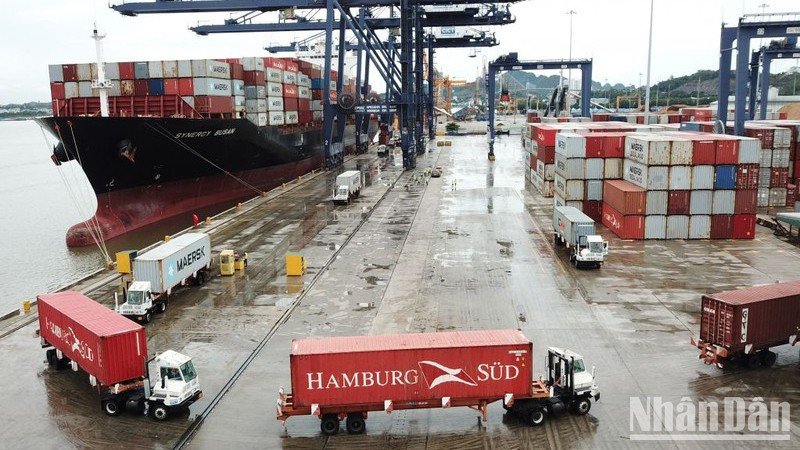Although Vietnam continues to record a trade surplus thanks to exports outstripping imports and positive signs in February’s export activity, the export growth target of 6% for the whole year is facing many challenges. The total value of exports and imports in the first two months of the year fell by more than 13%, in which exports dropped 10.4% and imports 16%.
It is notable that the biggest decrease was recorded in exports to the US - Vietnam’s largest export market. Exports to other major markets such as the EU, ASEAN, the Republic of Korea, and Japan also declined from a year earlier.
Export growth slowdowns have been seen across Vietnam’s key exports, such as electronics, computers and parts, garments, footwear, and timber and timber products.
In addition, faster contraction of imports than exports shows that enterprises are restricting the import of goods and materials for manufacturing amid declines in orders.
The decline in exports has also affected industrial activity, with the indexes for industrial production and growth in the manufacturing sector in the first two months of the year both declining from the same period last year.
This fact has highlighted the role of export as an important driver of economic growth. Thus, when this driver loses momentum it will hurt domestic production, especially manufacturing activities.
Achieving the export growth target and the overall economic growth target requires significant efforts of relevant ministries, localities, business associations, and enterprises.
Accordingly, it is necessary to strongly implement the measures set out by the government, especially the close monitoring of changes in trade policies of key partners as well as the introduction of appropriate and prompt responses.
Furthermore, it is necessary to step up trade promotion activities, continue reforming administrative procedures, fine-tune the legal framework on e-commerce and the digital economy, and utilise the signed free trade agreements, especially new-generation pacts.
Amid the difficult market conditions due to falling demand and high inflation in many major economies, exporters need to quickly obtain information in order to adjust their business plans accordingly.
They also need to bring their proactiveness and creativeness into play in seeking out new markets and capitalising on free trade agreements.
















